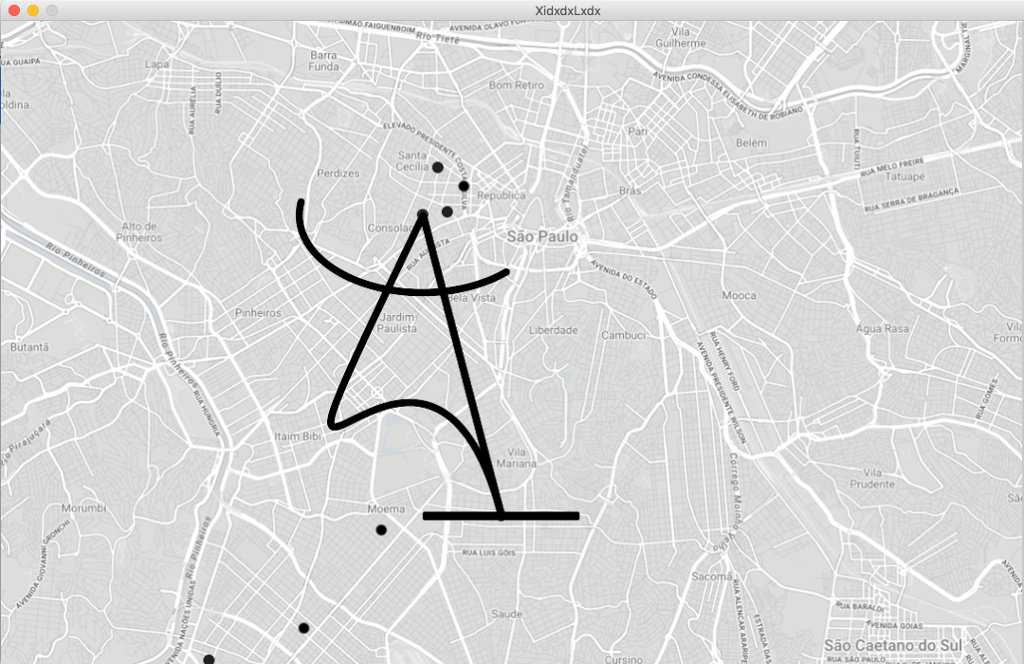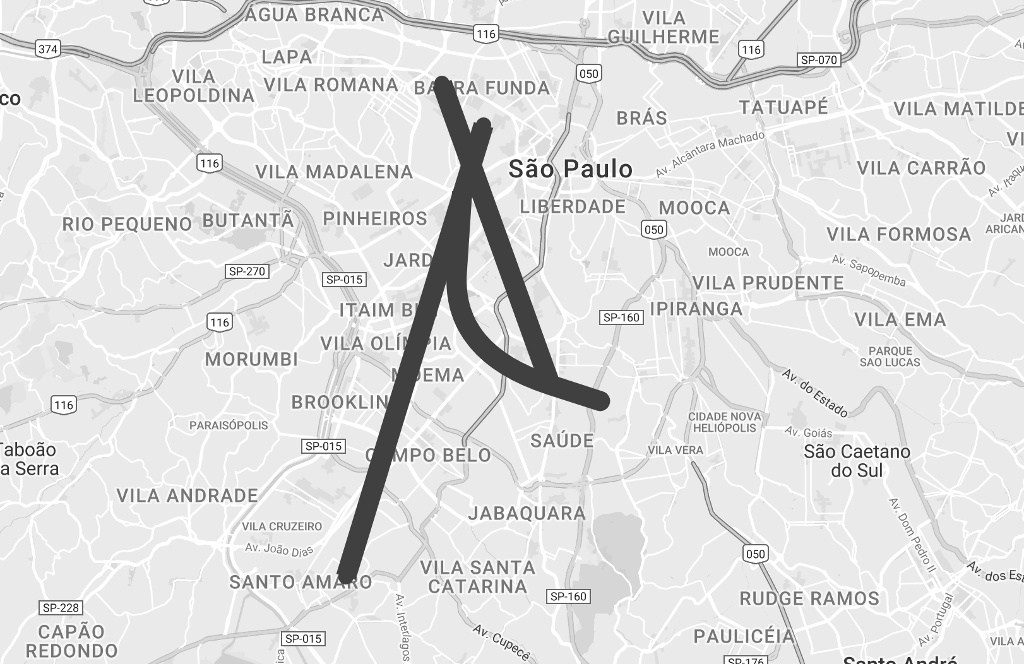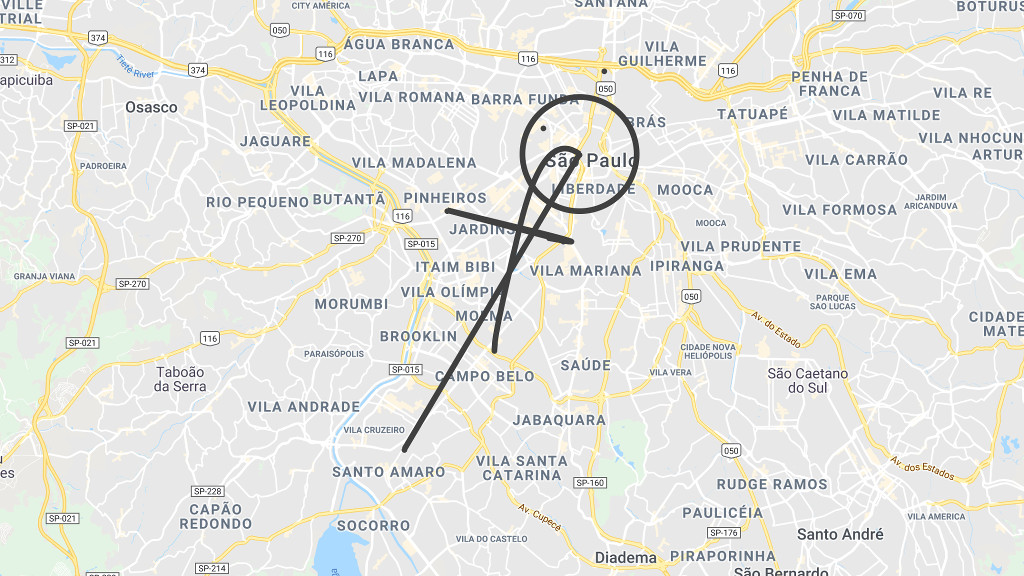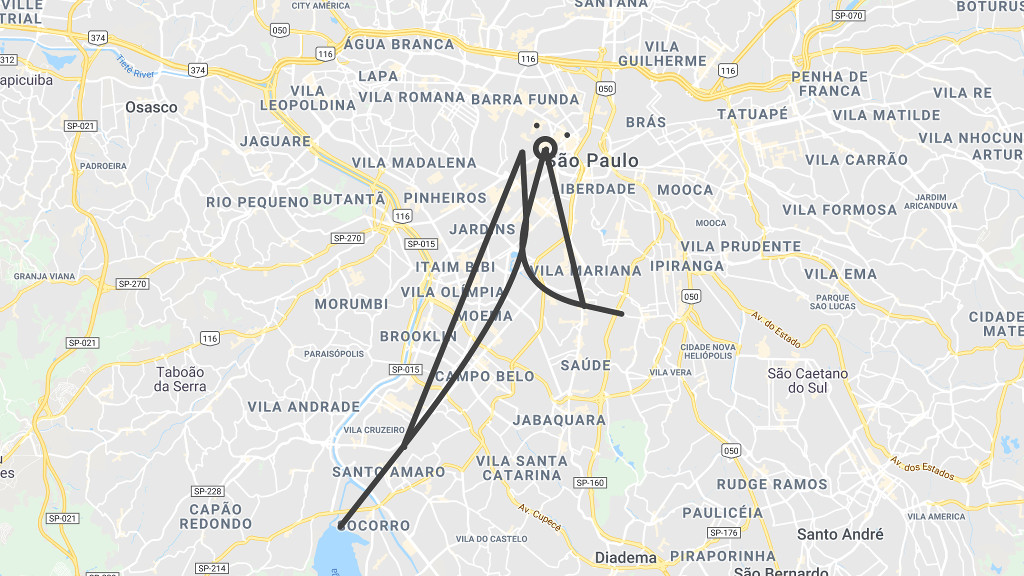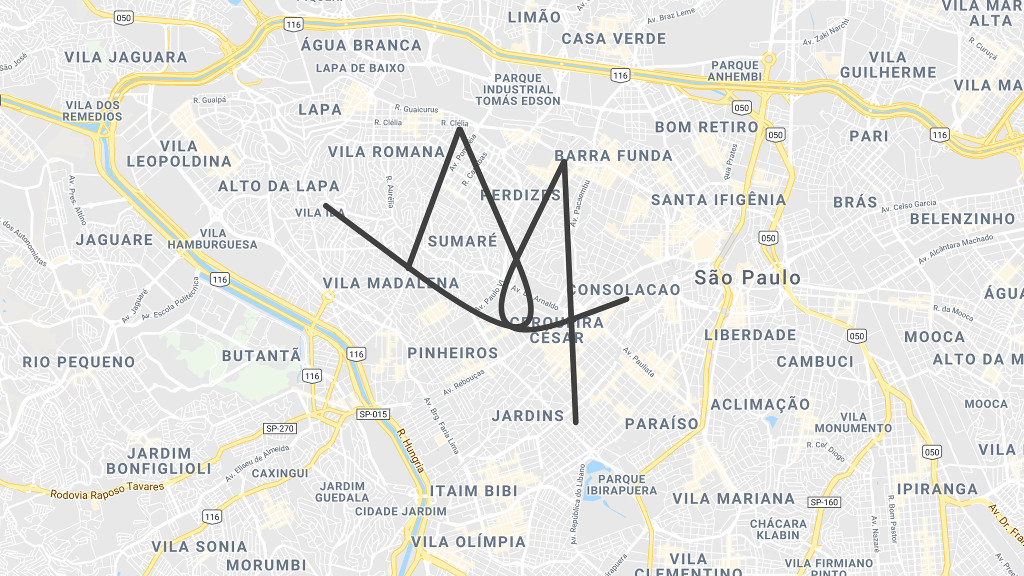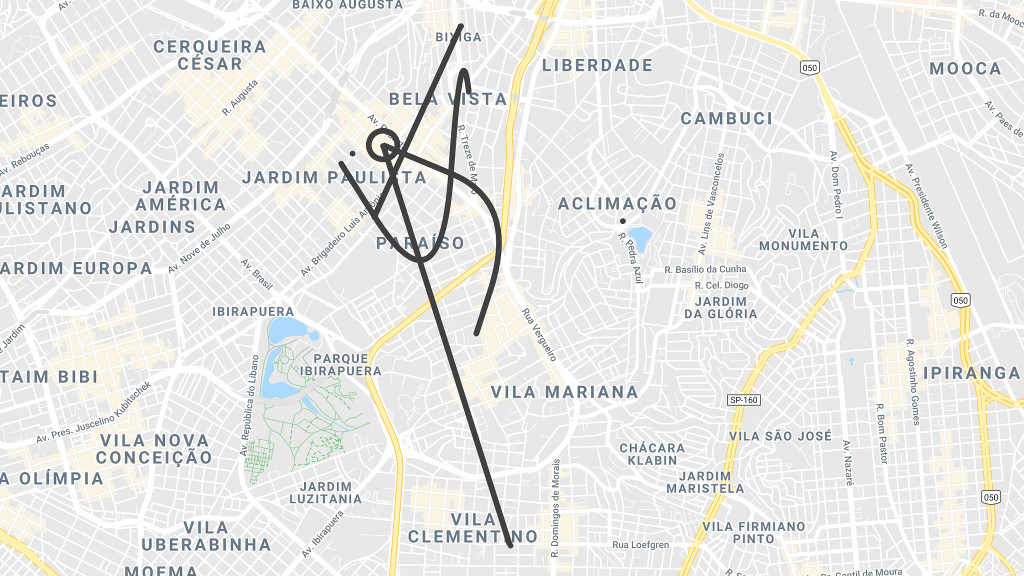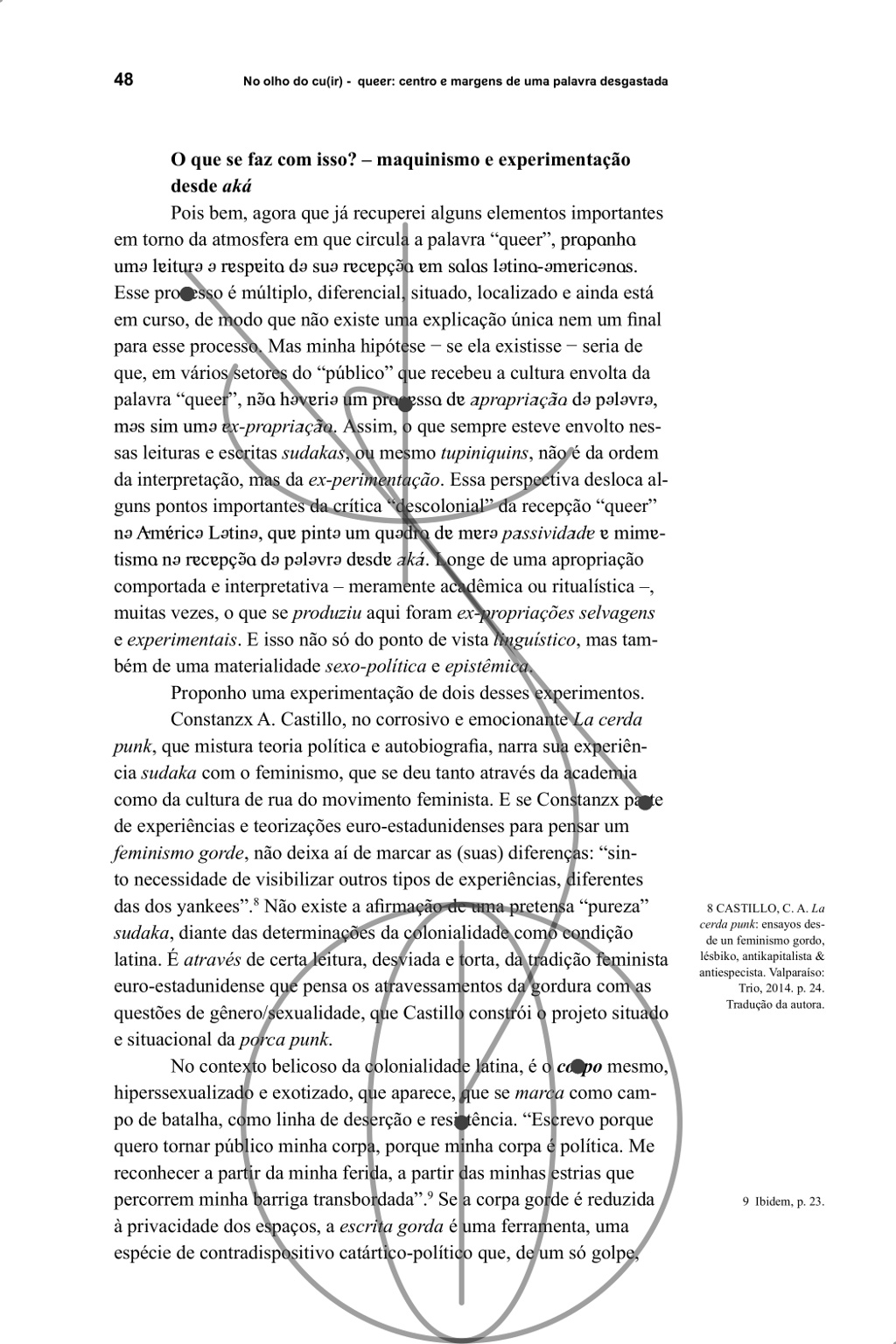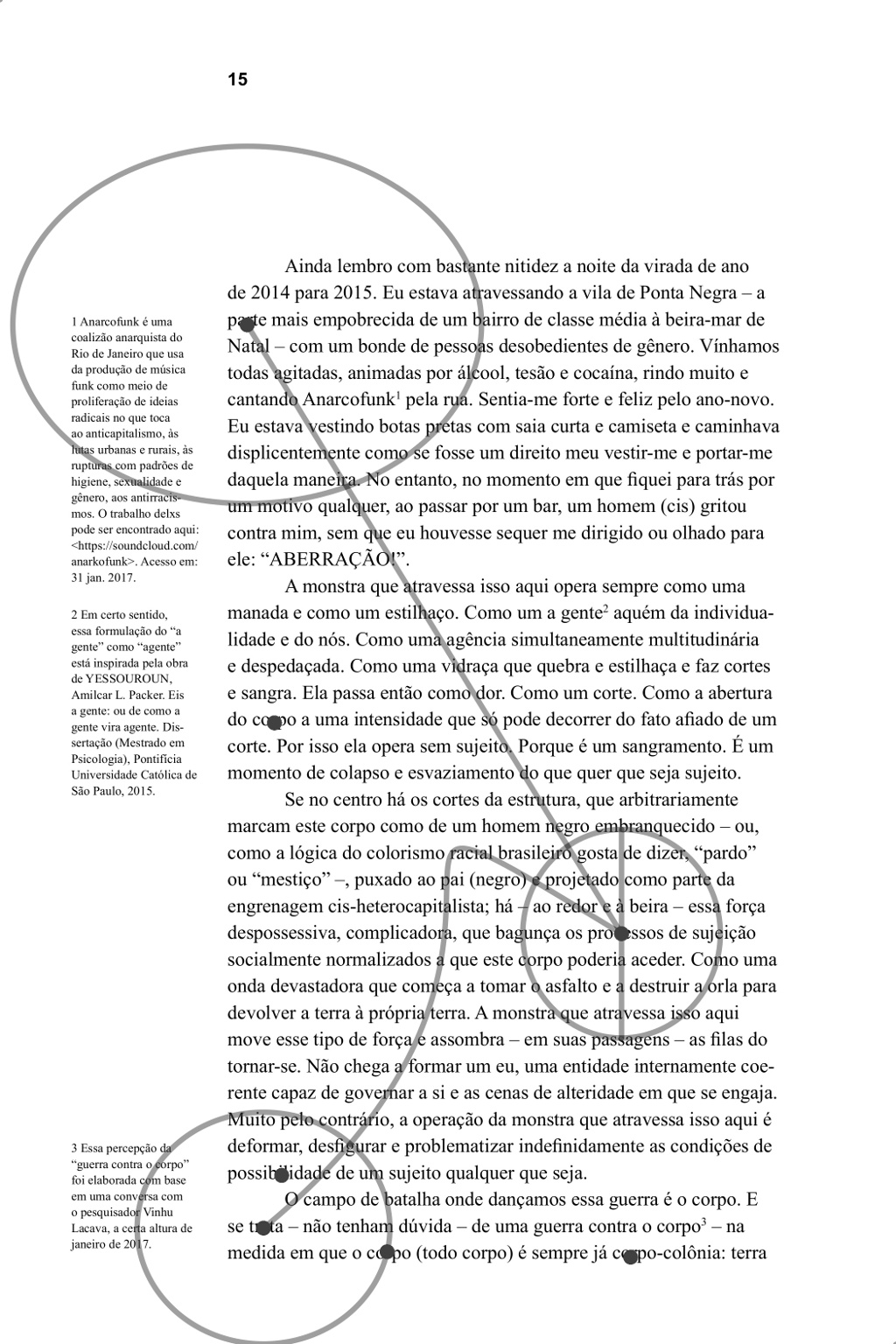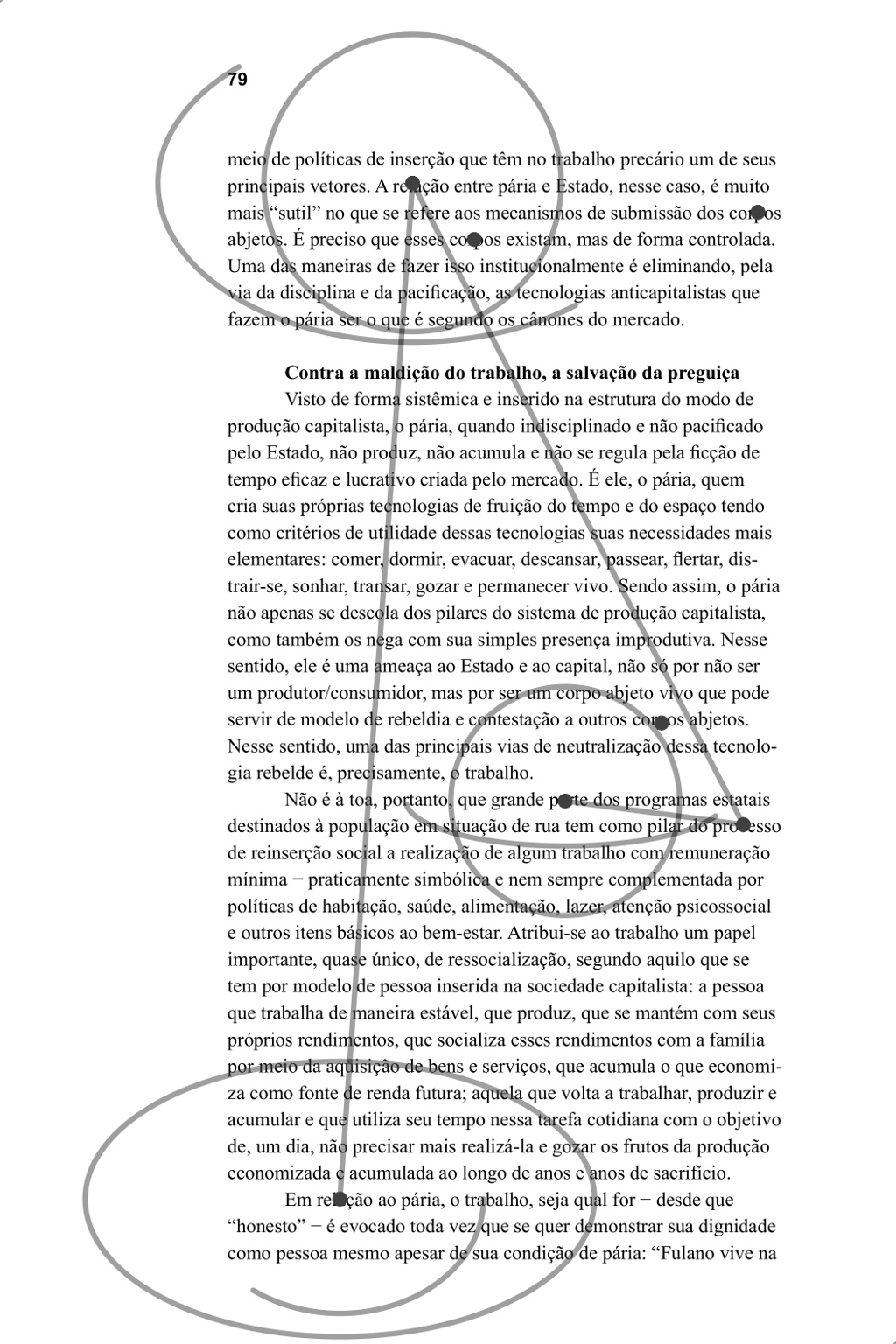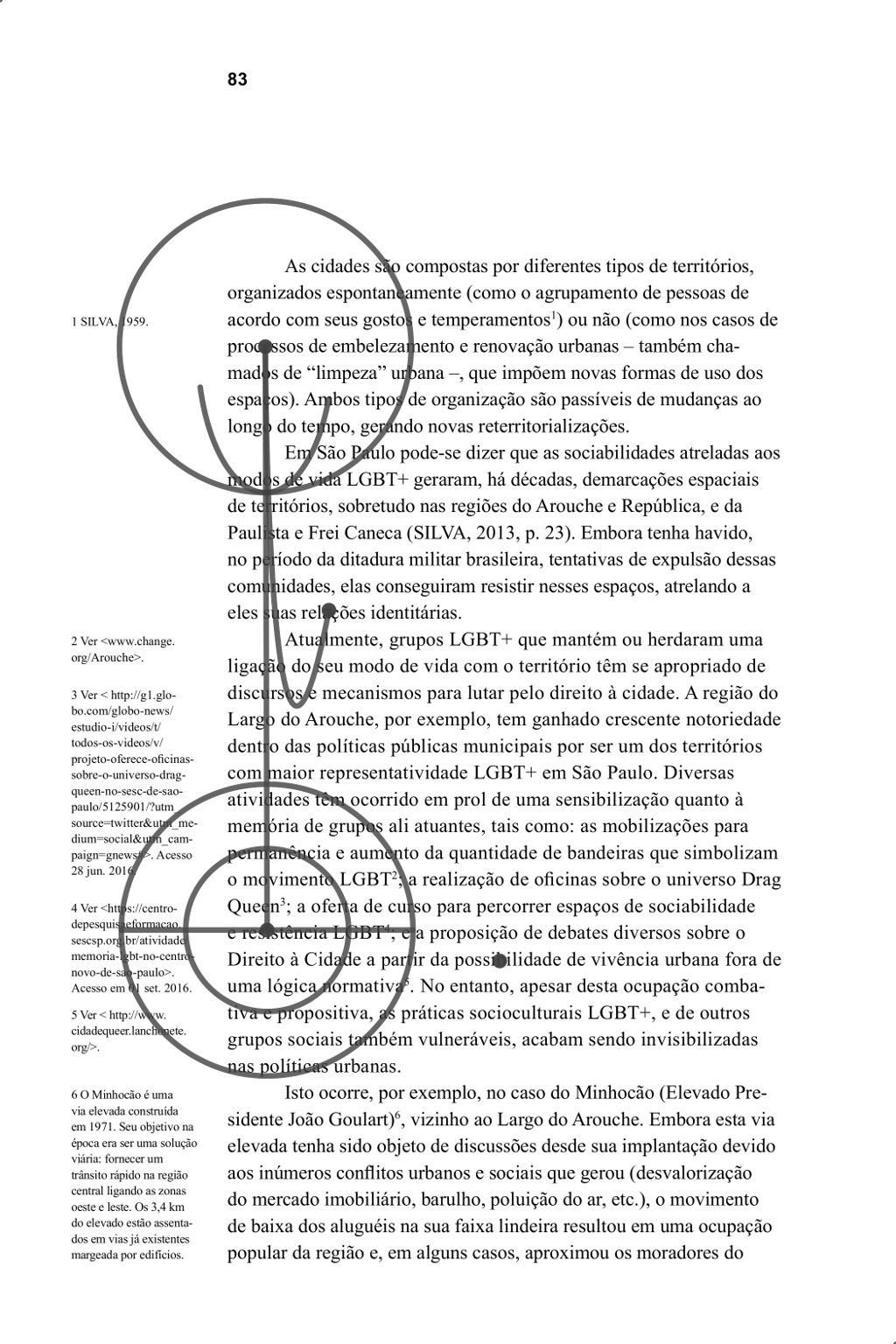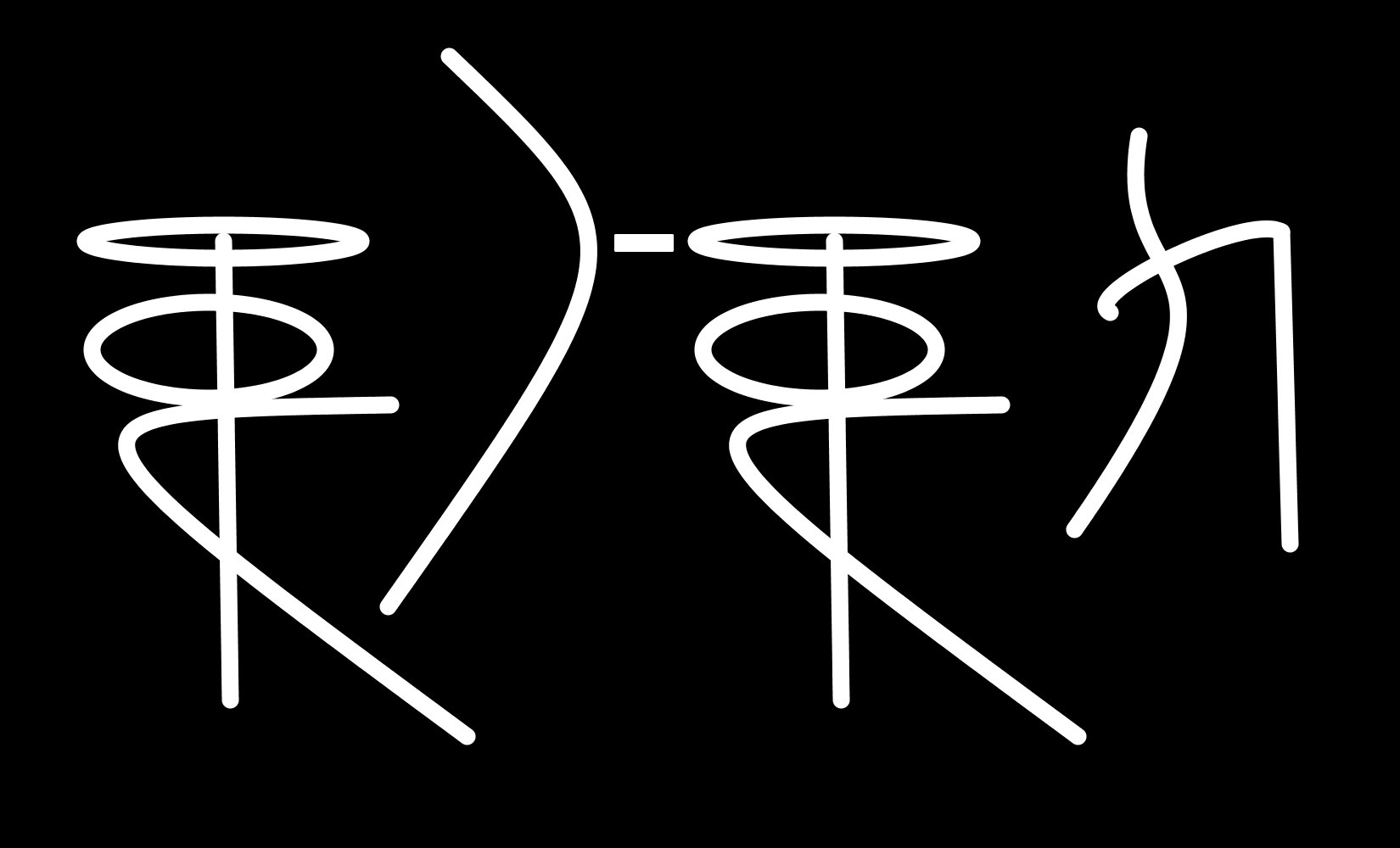
Collaboration with Raquel Parrine for the Cidade Queer Reader publication. The idea was conceived during meetings of the Laboratório Gráfico Queer/Desviante.
Cidade Lida
The outside is pure fiction because there’s really no inside, no origin we can trace everything back to – we are the hybrid products of elements whose source has been long lost, if indeed it ever existed. We are all exiles from cities whose bricks crumbled to dust ages ago. In a sense, we’re all aliens.
Every day we find ourselves before symbols of this desterritoriality, usually in their most obvious manifestation as language, that traditional, multimatrix system for representing viewpoints and power dynamics. Language is the instrument of colonial imperialism and native resistance. According to the Peruvian philosopher Antonio Cornejo Polar, language is proof that the hybridization that formed us is actually a non-dialectic heterogeneity, that is, the relationship between our formative cultures is not harmonious, but represents a symbolic dispute fought on the battlefield of language.
We can think of the city as a symbology that resembles these complex aspects of a culture’s language. For the British author and philosopher G. K. Chesterton, “The city is a chaos of conscious forces […] There is no stone in the street, no brick in the wall that is not a deliberate symbol – a message from some man, as much as if it were a telegram or a postcard – a hieroglyph.”
The city is a simulacrum that communicates through physical, concrete morphemes, forming a language that is at once incomprehensible and unfamiliar. The city fires off messages transmitted through dynamic poems; drawn paths that form constellations of meanings in search of Others that might distinguish the morphological values of this language.
Compared to cities that display some intentional urban plan, the lines laid down by the city of São Paulo translate its history of antagonistic urban policies. This idiosyncratic dispute is translated daily into the involuntary pathways, detours, and wanderings that the city’s lines oblige us to follow. In these excesses of life, located on the fringes of productive logic, the body produces an intimate language with the city. An unintentional language, secret even, invisible, inconvenient… Our relationship with the city does not emerge from any understanding of these glyphs, but from their aesthetics, derived from the energy we exchange with the city and tracing pulsing trails.
Xidxdx Lxdx
Xidxdx Lxdx is a system/ritual for representing and visualizing this post-human language built out of the interactions between people, buildings, streets, pathways and other agents of the urban environment. It continues some of the discussions that began during the meetings of the Laboratório Gráfico Queer/Desviante: the denormatization of (typo)graphic design, the colonialism of the word queer and the limitations imposed by gender on languages (and vice-versa).
We begin the ritual by marking emotional points on a map – places related to what we are trying to read/understand/represent. These points represent a word, a sentence, a series of events, a routine, people or some other concept that manifests in the intra-actions between humans, the city and language. Next, custom software developed specifically for this project analyzes the markers and reveals a glyph.
We are not suggesting that these glyphs – the result of mathematical and mystical calculations – be used as substitutes for words; merely that they serve as a tool that affords alternative readings of our personal, social and political relations.
Queer Lida
The same system was used to create alternative readings of the Cidade Queer Reader publication. Rather than using affective points on a map, the software uses an algorithm to identify common themes between texts based on words, phrases and rhythms. Using these points in common, the algorithm draws paths of nonlinear interactions within the texts.
